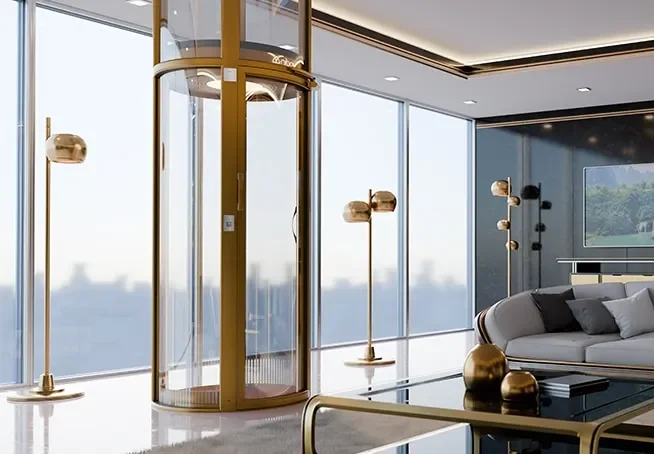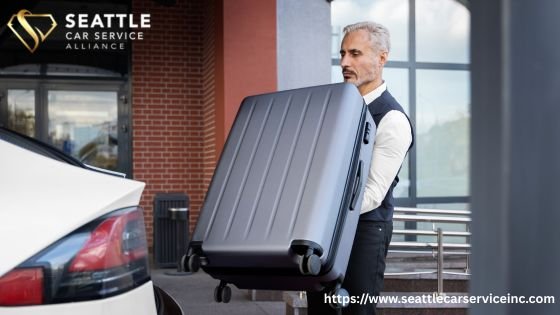This guide will look at the cost of residential elevator installation, bringing modern and efficient pneumatic elevators into focus. You will understand major determinants of pricing, different types of elevators you can opt for, and precisely how these can raise the value of a property with increased accessibility. It also explains why Nibav Home Lifts stands out as a trusted brand offering safe, eco-friendly, and elegant solutions for residential elevators.
Introduction
As more homeowners look for comfort, accessibility, and long-term convenience, residential elevators have become commonplace in modern homes. What was once considered a luxury has now become an affordable and practical solution for living in multilevel homes. Whether you’re caring for elderly family members, enhancing home resale value, or simply adding a touch of luxury, a home elevator may be one of your better investments.
But here is where the same, important question begins to pop into almost every homeowner’s mind: how much would installing a residential elevator cost? The average installation costs in 2025 range from $50,600 to $103,600, depending on the type, size, number of floors, and customization.
Understanding Residential Elevators
The residential elevator is a small lift designed for a private home. Unlike commercial systems, residential elevators are compact, quieter, and easily blend with interior designs. They are used not just for convenience, but for accessibility, especially in multi-story houses where climbing stairs can become challenging.
The common types of residential elevators include hydraulic, traction, and the increasingly popular pneumatic elevators. Each kind has variation in price, design, and maintenance needs.
• Hydraulic Elevators: Use fluid power to move between floors. They provide smooth rides but require a pit and a machine room, which increases installation costs.
• Traction Elevators: Utilize cables and counterweights. They are reliable but require major structural changes.
• Pneumatic Elevators: These are air-driven systems with no cables or pits. Their space-saving design, quick installation, and energy efficiency make them a preferred choice for modern homes.
Costs of Installation Influencing Factors
Multiple factors are at play in the determination of residential elevator cost, and recognizing these elements can help a homeowner with budgeting.
1. Type of Elevator System
The most significant cost variation comes from the type of elevator. In-ground hydraulic and in-ground traction elevators involve heavy construction, whereas pneumatic elevators require the least amount of modification, minimizing labor and material costs.
2. Number of Floors
The cost is higher for the more levels served by an elevator. With each additional floor comes added height, wiring, and mechanical complexity for the installation.
3. Size and Capacity
Compact models for one to two persons are cheaper, while larger elevators, accommodating wheelchairs or heavy loads, will raise the cost.
4. Design and Customization
Additional features such as customized finishes, glass cabins, LED lighting, or luxury fittings raise the price by several thousand dollars.
5. Location and Labor Costs
Regional labor rates differ, as do building codes. Generally speaking, urban areas will be more expensive for both labor and permit fees than suburban or rural regions.
6. Retrofitting versus New Construction
Installation during new construction is usually cheaper due to the fact that structural planning can accommodate it. Installing a lift into an existing home usually costs more because of modifications that are needed.
Average Cost of Residential Elevator Installation
The average cost of installing a residential elevator in 2025 is between $50,600 and $103,600. This covers materials, labor, electrical work, and permits.
Smaller pneumatic elevators, serving mainly two floors, fall in the lower range, while larger, custom-designed lifts for three or more floors reach the higher end.
With an investment this big, most homeowners consider it a long-term improvement that will promote mobility, convenience, and home value.
Why Pneumatic Elevators Are the Future of Home Lifts
Among all the types, pneumatic elevators are sure to stand out with their innovative design and cost-effectiveness. Using air pressure instead of cables or hydraulics, these elevators glide smoothly within a transparent cylindrical shaft.
Quick Installation
Most pneumatic elevators can be installed in just two to three days, as opposed to traditional systems that take a number of weeks.
No Major Construction Required
They do not require a pit, shaft, or a machine room; space and construction costs are thus considerably saved.
Energy Efficiency
These elevators use very little electricity. The rise is done by the air pressure and the coming down depends on gravity, which uses almost no energy.
Modern Aesthetic Appeal
The clear panoramic design lets in light that complements contemporary interiors, making the elevator a visual centerpiece.
Low Maintenance
Since they have fewer moving parts, pneumatic elevators are relatively easy to maintain with annual servicing costs ranging between $500 to $1,000.
Advantages of Installing a Residential Elevator
Installation of an elevator has both practical and long-term benefits.
Accessibility and Independence
This allows seniors and people with mobility issues to move between floors safely with no assistance.
Increased Property Value
Homes with elevators often command higher resale values-sometimes as much as 10 to 25 percent more than comparable homes.
Future-Proofing
Adding an elevator prepares a home for future needs and eliminates potential barriers to mobility.
Sustainability Pneumatic systems are now very eco-friendly and energy-efficient, thus being a good sustainable home upgrade.
Why Choose Nibav Home Lifts
Nibav Home Lifts are pneumatic elevators now leading the globe with innovative solutions that are eco-friendly for residential spaces. Their elevators combine modern design with world-class safety and functionality. Nibav lift requires no pit or machine room; thus, installation is pretty easy and straightforward, even in existing homes. All lifts models come with a sleek, panoramic glass design adding elegance to your interiors while offering smooth, quiet operation. Along with minimal energy consumption, reliable safety standards make Nibav home mobility affordable yet stylish.
Conclusion
The typical residential elevator installation cost will range from $50,600 to $103,600, depending on the type, design, and amount of customization involved. However, with all the advancements in technology, the most practical and feasible choice for the modern home has been pneumatic elevators due to their simplicity, energy efficiency, and low maintenance. Merging technology, aesthetics, and sustainability, Nibav Home Lifts offers the perfect blend of luxury and functionality, introducing the future of home mobility to living areas today.




Leave a Reply